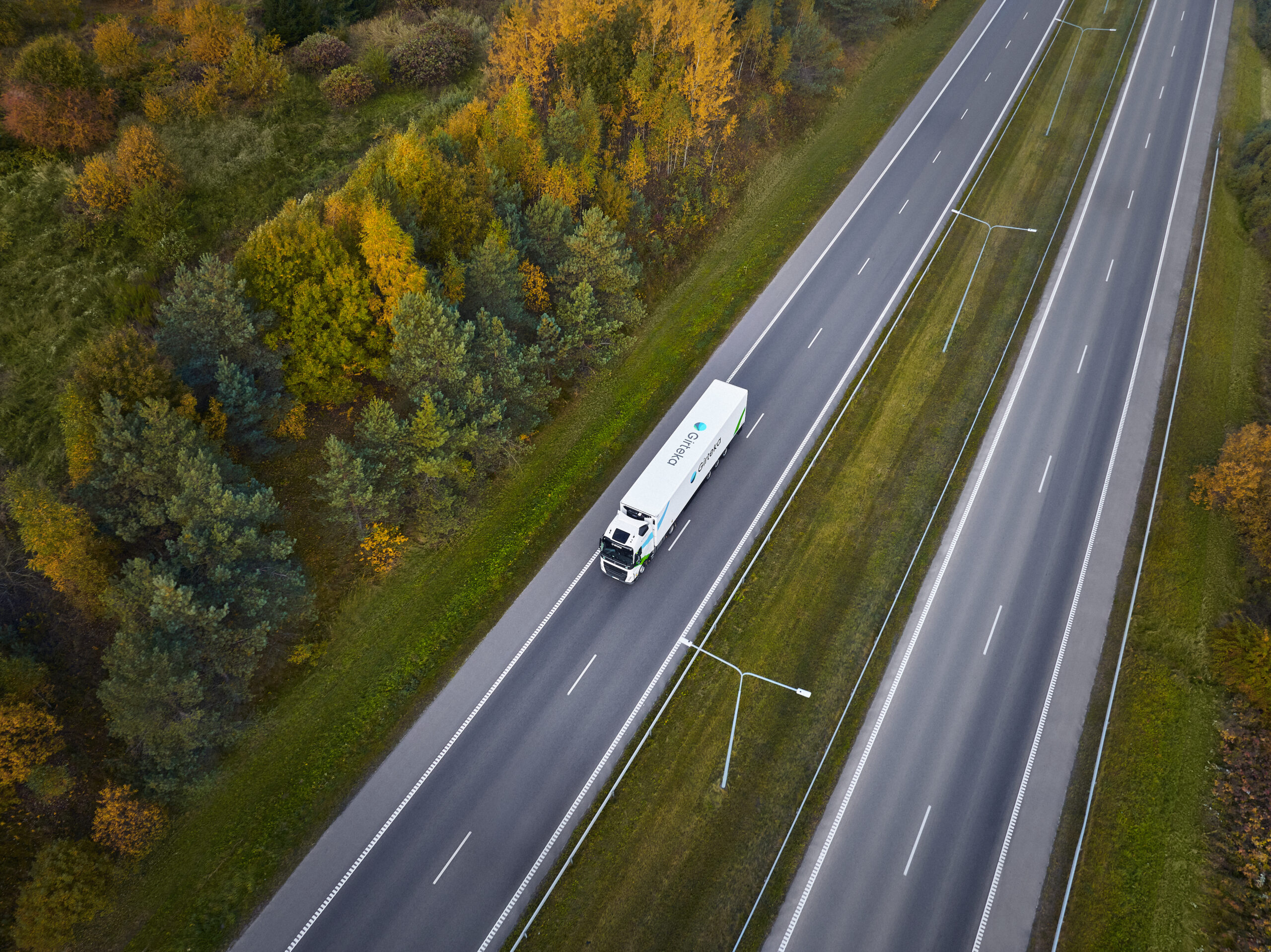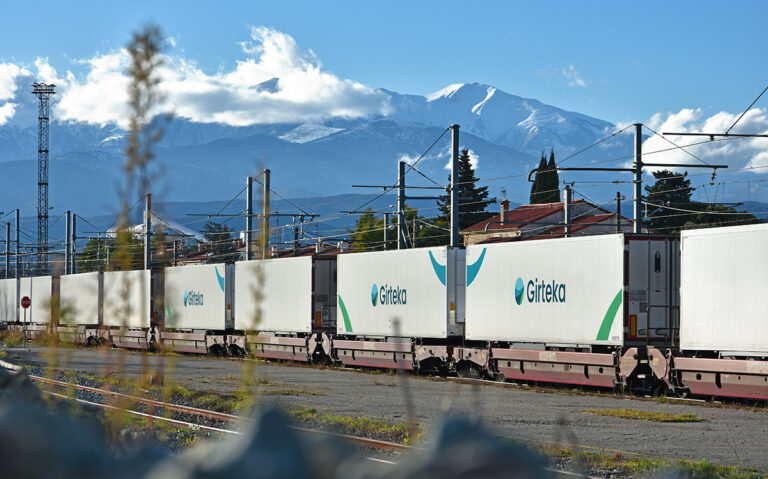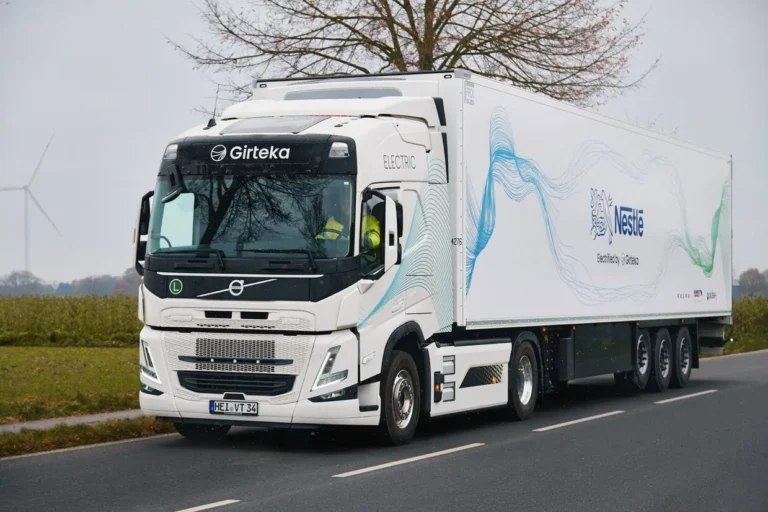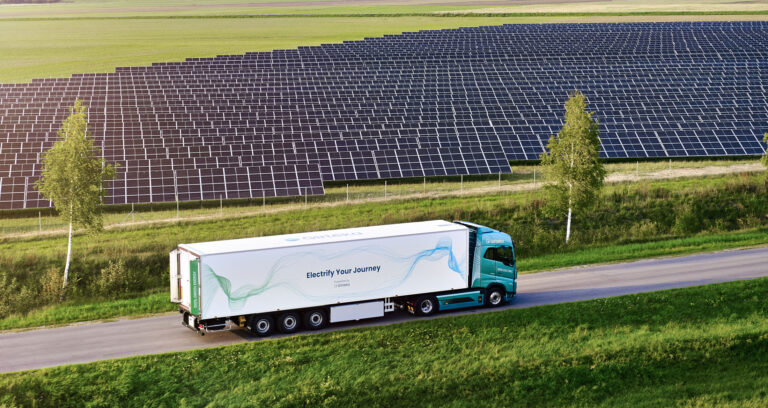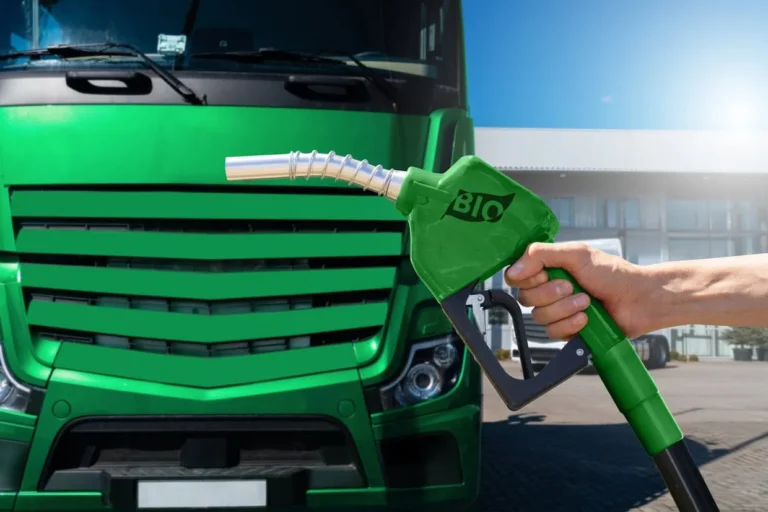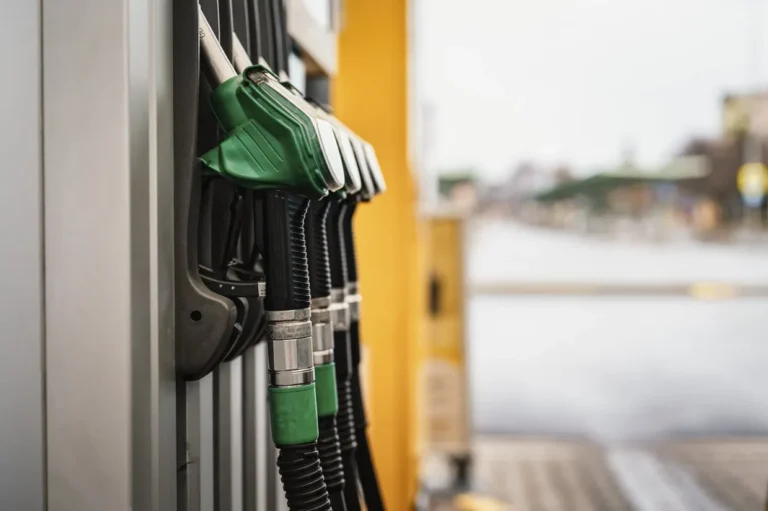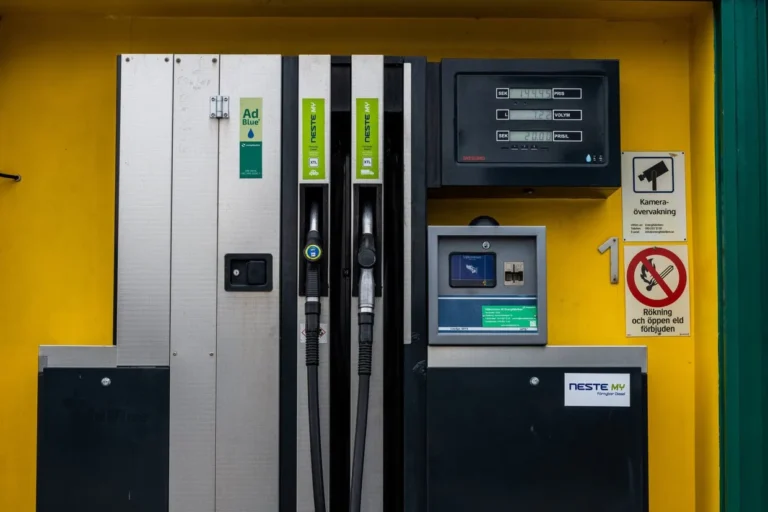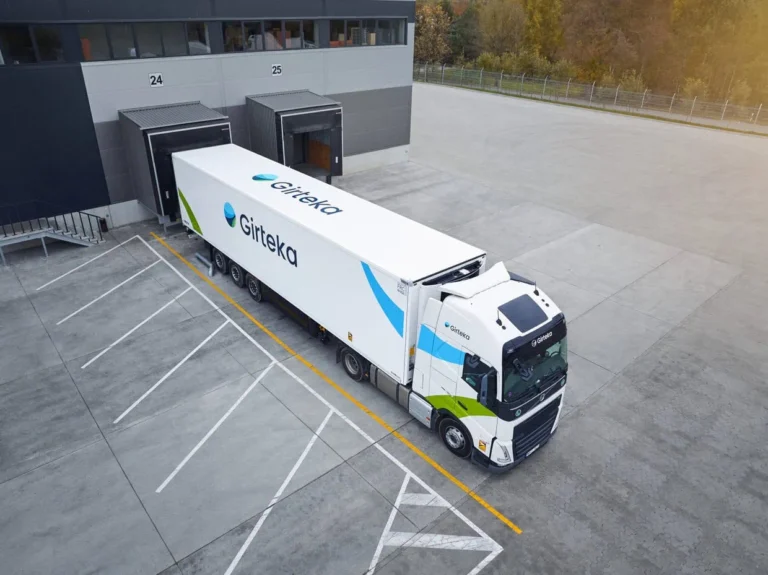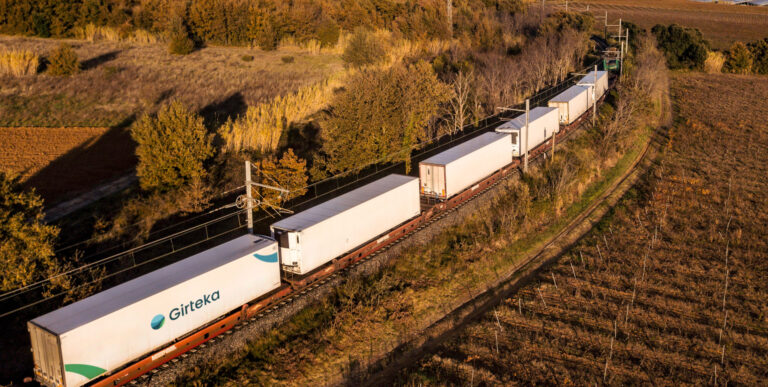With the 2050 deadline, as outlined by the Paris Agreement, approaching, governments and companies alike have been reducing their emissions or laying out goals to minimize their impact on the environment. Companies’ goals also reached the public domain, as press releases, sustainability reports, and messages via other mediums have been published by enterprises globally to ensure that their customers, partners, and other stakeholders took note of the fact that these companies have ridden the green wave. But how can companies, particularly road freight transport companies, avoid greenwashing and prove that they are truly sustainable?
According to the Oxford English Dictionary, the term “greenwashing” was first coined in 1990, when a group of protesters in Orange County, California, blamed corporations for telling the public that they are working for the environment while still continuing to pollute. While the term did not gain much traction in the following two decades, the 2010 and 2020s – perhaps also due to the rise of social media – have shone the light on “the creation or propagation of an unfounded or misleading environmentalist image”.
Greenwashing galore
Perhaps before answering the question of how companies can present themselves as actually sustainable, it is worth exploring how they can attempt to dilute their polluting images.
For example, ClientEarth, an environmental law charity and a registered non-profit organization, compiled the Greenwashing Files, exposing campaigns to attempt to present their “green” image by some of the most polluting companies in the world, including oil and gas enterprises. One company, owned by a Middle Eastern state, that has joined the Oil and Gas Climate Initiative, contributed over $1 billion as a group to develop technologies that would lower the emissions of the fossil fuel sector. The initiative aims to reduce their oil and gas processes’ emissions by 13% by 2025. But at the same time, ClientEarth assessed that the company is estimated to produce 27 billion tonnes of CO2 emissions between 2018 and 2030, which is equivalent to yearly emissions by the Dominican Republic or Denmark, according to the European Commission (EC).
There are less extreme examples of greenwashing, such as labelling a plastic bag of a household item as recyclable. In reality, the complex nature of recycling plastic has put into question whether even basic plastic was recycled. “The U.S. plastic recycling rate was estimated to have declined to about 5-6% in 2021, down from a high of 9.5% in 2013 and 8.7% in 2018, when the US exported millions of tons of plastic waste to China and counted as recycled even though much of it was burned or dumped,” read a report by Greenpeace, an international environmental organization, published in October 2022.
These are some of the more extreme examples, which by measure, are not as bad as a company proclaiming that it has improved the amount of recycled office paper by 50%, despite the fact that the number grew from 2% to 3% from the total paper that was used in a business’s premises. The main issue with greenwashing or the proclamation that a company is sustainable is the lack of transparency of data and secondly, a lack of data-driven approach towards sustainability.
While the transparency of data can be a conscious decision that was taken for one reason or another, whether it be the confidentially of said data or the desire not to attract too much attention, a data-driven approach towards sustainability should not require too much thought. That is especially true for road freight transportation companies, one of the main industries lawmakers and the public have focused on as some of the most polluting sectors.
Sustainability challenges
The problem for road freight companies is the fact that there is a lack of drop-in solutions to replace diesel trucks that have been the backbone of the sector’s fleets. The efficiency of diesel engines has improved, especially as the EC, for example, imposed laws on truck manufacturers to continue looking for improvements with the Euro 1 to 6 standard yet they still continue to emit pollutants as they drive down the road.
On one hand, though, Original Equipment Manufacturers (OEM) do not have many options, as diesel trucks remain the best option for the near-term future for truck operators due to their superior performance compared to electric trucks. Additionally, Internal Combustion Engines (ICE) and their supportive infrastructure, namely gas stations, can be found seemingly everywhere. Chargers, on the other hand, even for passenger vehicles, remain a rarity in some regions of Europe. Hydrogen trucks, which could replace ICE trucks due to their range and performance, have an even bigger issue of infrastructure, including the production of the fuel.
“Hydrogen accounts for less than 2% of Europe’s present energy consumption and is primarily used to produce chemical products, such as plastics and fertilizers. 96% of this hydrogen production is through natural gas, resulting in significant amounts of CO2 emissions,” assessed the situation the EC. And even if the upcoming Euro 7 standards will continue driving down the emissions of the overall fleets of manufacturers, not only from the tailpipe but secondary emissions from brakes and tires.
Data continues to be unfavourable towards the sector as a whole. In 2021, there were fewer than 2-year-old trucks on the roads compared to 2017, according to Eurostat, which means that the latest technologies deployed by manufacturers have not been visible on the roads just yet. This could very well be- the result of the supply chain constraints that have affected truck builders over the past few years.
Still, according to ING Think, a subsidiary of ING, the Netherlands-based bank, the “European truck fleet has expanded less than transport volumes since 2015”. Additionally, the company pointed out that a low inflow of new trucks, as well as slowing replacement rates, are leading to the aging of fleets across Europe. Furthermore, the supply chain issues will continue to affect OEMs for the next year or two. Truck delivery times, on average, might still run up to 12 months following an order, and “if transport demand continues to stagnate and order intake slows, the market could turn from exceptional to normal again in the run up to 2024”.
Making road freight operations greener with data
However, buying new and more efficient trucks is not the only way a company can become more sustainable. That does not mean that newly announced vehicles should be ignored, as manufacturers have been nothing short of amazing in terms of efficiency gains over the past few years. It means that companies can and should actively monitor their operations’ data, looking for ways to be more efficient and subsequently, implement data-driven solutions.
A basic example of this is avoiding empty kilometres by monitoring historical datawhen certain regions have experienced a peak season and whether a company managed to deploy enough or just the right amount of capacity for its customers there. Avoiding empty kilometres will not directly reduce emissions yet at least trucks will carry products that are essential for consumers and businesses alike.
Another example could be related to journey planning. Stop-and-go traffic, for example, can lead to worse emissions. One study, conducted by two University of California Transportation Center scholars, concluded that certain congestion mitigation strategies could reduce emissions by up to 20%. The two scholars provided examples of three different approaches, namely “congestion mitigation strategies that reduce severe congestion, allowing traffic to flow at better speeds; speed management techniques that reduce excessively high free-flow speeds to more moderate conditions; and shock wave suppression techniques that eliminate the acceleration and deceleration events associated with the stop-and-go traffic that exists during congested conditions”.
How can road freight transportation companies benefit from this? For one, adjusting their drivers’ work times could potentially result in the planning of journeys that would avoid the most intense traffic moments in urban areas, allowing drivers to sustain more consistent speeds without the need to repeat the brake and acceleration cycle too much.
That could be an issue when you are dealing with time-sensitive cargo, such as fresh fish. At the same time, gathering, analysing, and then providing conclusions from data can lead to productive discussions with customers on how to make their supply chains more efficient and in turn, more sustainable without the necessity of shifting to zero-emissions trucks.
Even integrating zero-emission trucks can be much easier with data, as electric heavy goods vehicles (HGV) have a limited range due to current technological limitations. Nevertheless, if a customer’s round trips are consistent and will not take the truck’s performance to the limit, it might be a perfect opportunity to open up a discussion about whether it would be viable to electrify a certain lane, including the building of corresponding infrastructure to completely eliminate emissions from that lane.
Furthermore, less polluting options, whether it would be cars, trucks, or vegan food, are seen as more expensive. While the stereotype is affirmed by the additional capital expenditure (CapEx) required to buy them, there are secondary costs that have to be looked at as well.That is where data comes in again. Electric trucks or any other type of vehicle that is powered by batteries have fewer moving parts which results in easier and cheaper maintenance procedures. But only data can provide clarity on whether that offsets the higher CapEx.
Data remains the key
At the end of the day, data remains the key that can unlock many of the doors that lead to a more sustainable future. Moving towards that future requires consistent effort and small steps, as only taking huge ones, such as ordering a lot of electric trucks, can delay actions that can be done here and now.
The development of Girteka’s intermodal rail traffic services between 2019 and 2022 resulted in the company dedicating more and more of its customers’ loads to electric trains in certain regions. As such, if in 2019 the company saved 927,700 kilograms of CO2, in 2022, it was 16 million kilograms of CO2 by developing its intermodal rail network across Europe. The growth is impressive and concrete data can help convince customers that this is a readily available option to reduce their supply chain’s emissions.
Overall, owning all of your trucks is another way for Girteka to ensure that it can continue collecting and analysing data that could lead to further emissions savings. Data supports the usage of tools such as the AI Operator and AI Planner that have helped the company become much more efficient in utilizing its trucks and trailers with the help of its partners’ solutions, such as the SAP Transport Management (TM) system.
As such, every decision to plan journeys or assign loads to certain trucks is based on data, reducing the workload and stress of Girteka’s colleagues. Data analysis, simulations, and data-based decisions mean that as a digitalized road transport company, Girteka can utilize its fleet of over 9,000 trucks efficiently and continue reducing its emissions by optimizing its daily operations and the utilization of its fleet.
We deal with everything from single to multiple shipments with large quotes
Get a quote for your one-time shipment load
Get a quote for your multiple or frequent shipments
We deal with everything from single to multiple shipments with large quotes
Get a quote for your one-time shipment load
Get a quote for your multiple or frequent shipments
